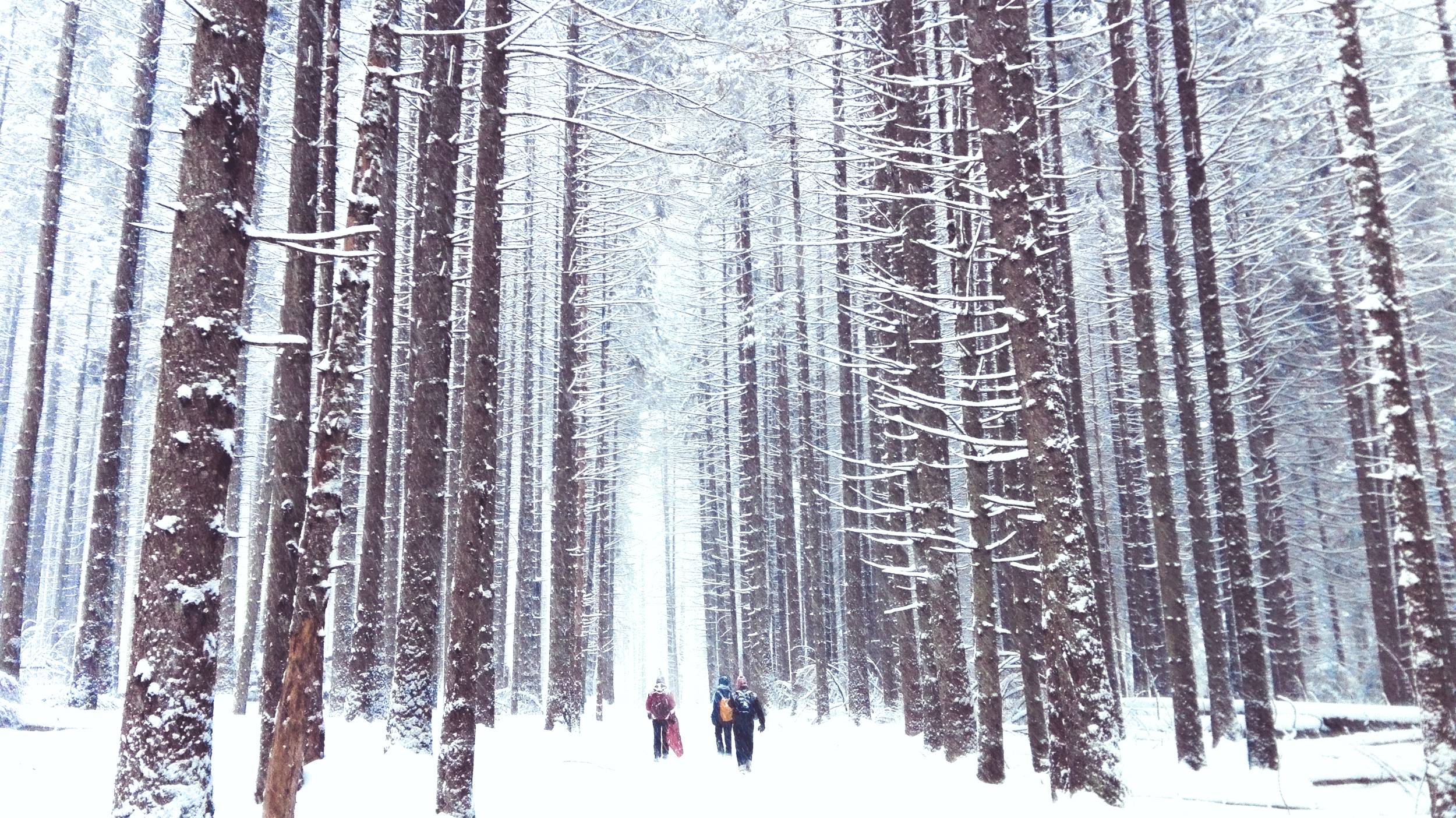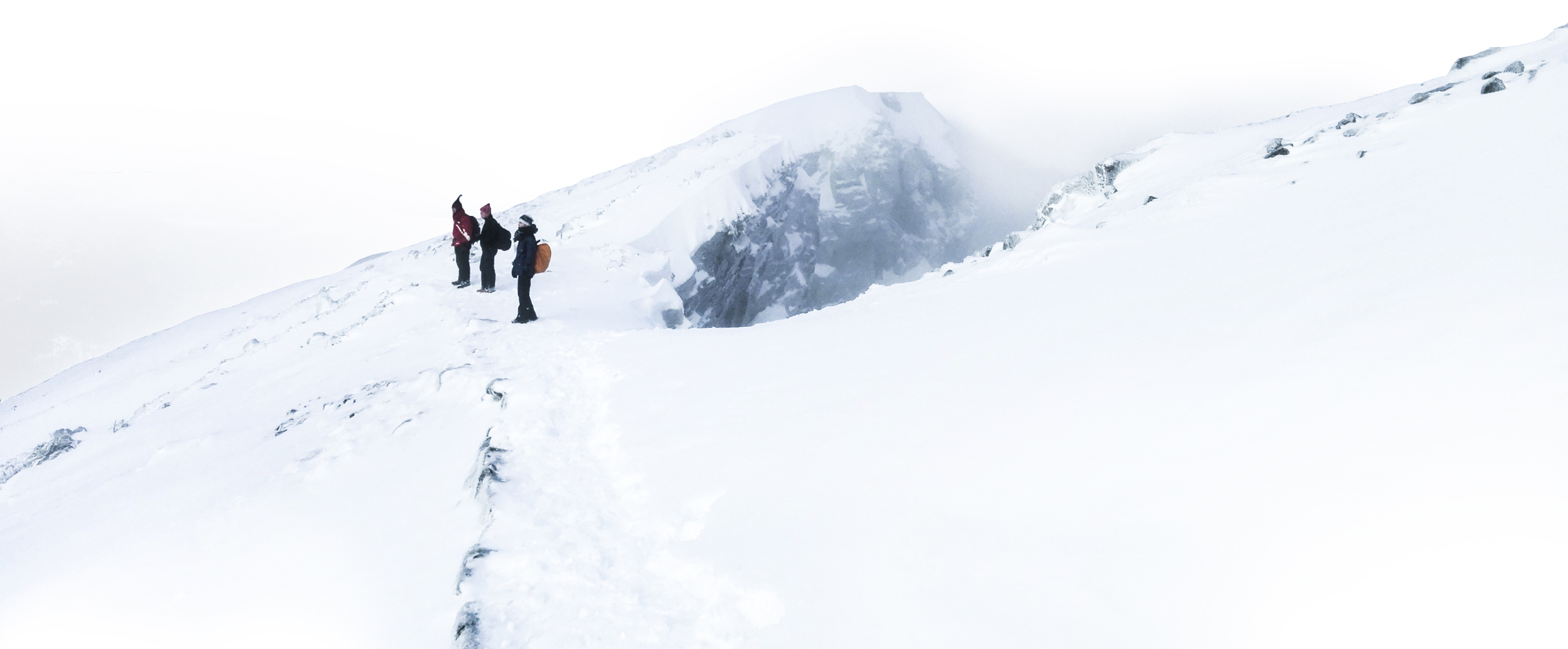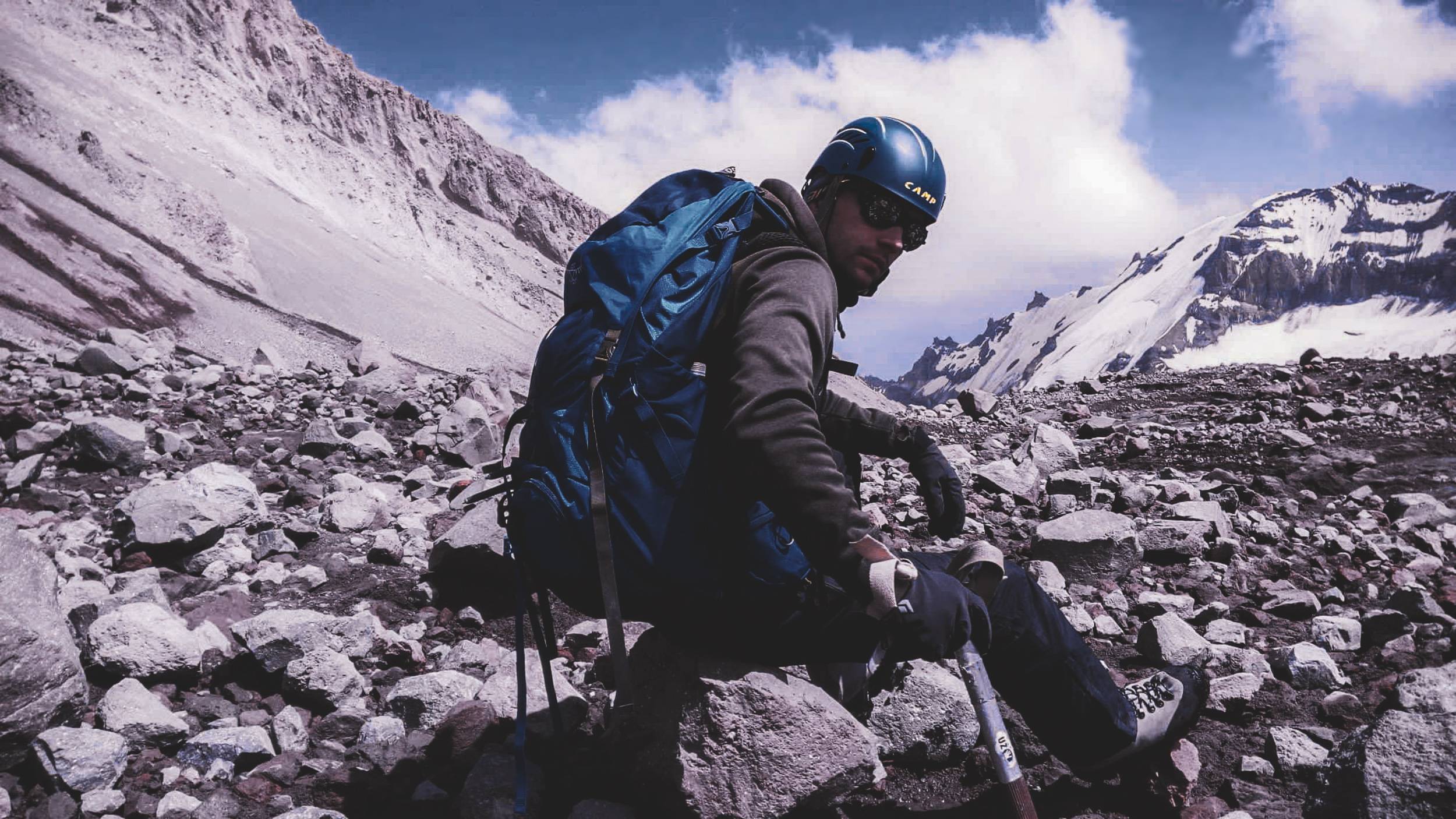December 10, 2020
Winter Hiking & Outdoor Gear List for Beginners
Active life, Experience, Guide, Hiking
Top attractions:
Introduction to Winter Hiking
Nature is the true wonder of traveling. It doesn’t matter where you go, every distinctive culture molds itself around the geography of the surrounding environment. Rarely, it is possible to fully understand the true culture of any given people without exploring the landscapes they are living in. Their history, the myths and legends, the local foods, and even the materials of buildings are all directly influenced by the nature surrounding the cultures.
The problem is that most of these environments are locked out throughout the big portions of the year because of the harsh weather conditions. Luckily, these days, well-marked roads combined with certain gear and clothing allow exploring nature even during the winter in the harsher climate zones. What’s more is that one could make an argument that the cold season of the year is, in fact, the most beautiful one.

The alpine region during the winter sometimes looks otherworldly. Photo by Alis Monte [CC BY-SA 4.0], via Connecting the Dots
I wrote this guide to help the people, who want to keep hiking throughout the year and begin their venture into the winter wonderland. If you are just starting to plan your hikes in the sub-zero temperatures, this article is just for you. Despite its nature, this guide will be useful to the people, who want to double-check their gear & clothing as well.
If you never had any experience of hiking during the winter, and you think it is not for you – hang in there, it is normal. I haven’t met a person yet, who regretted that I convinced them to try it. Of course, it is challenging and somewhat uncomfortable, but you’ll see – winter hiking is actually a blessing in disguise.
Affiliate Link Disclaimer
Despite this article containing affiliate links, these are the basic information and tips I give to my friends, when organizing winter hikes for small parties. I’ve only linked to the winter hiking product brands I either use myself or know somebody who recommended it to me.

It is not necessary to go to the mountains to enjoy the beauty of nature in winter. Photo by Alis Monte [CC BY-SA 4.0], via Connecting the Dots
Winter Hiking Challenges
Cold
Winter bites – I imagine it is common sense that you need to be well prepared for that. Layering is the best way to keep your body warm. Two light layers could outperform one warm sweater. It is all about trapping warm air between your body and cold outside weather.
I always carry an extra upper layer and extra socks in my bag in case my body starts cooling. Boosting your natural immune system could also help to cope with the sub-zero temperatures. Despite the cold being the most obvious challenge of hiking in winter, I would argue that it is not the thing you need to worry most about.
Sweating
For beginners, it might sound counter-intuitive, but avoiding sweating is what you should be thinking about. The reason for that is that once you get wet, it is very easy to get cold, and drying the inner layer is almost impossible. This is why ventilation on the outer layers is so important. Another way to avoid getting sweat is to make short but frequent breaks.
Avalanches
Unless you go for winter hiking in plains, it is very important to check the local avalanche danger levels. Walking close to the slopes, covered by snow might be dangerous. Head to the mountains, only if the probability of avalanches is lower than average. In winter, during the days with precipitation, I would recommend hiking in the valleys, instead of mountainous routes. Generally, always remember that less snowfall means fewer chances for an avalanche to occur.
Hidden Terrain
Mountains are a very dangerous place and it is even more so during the winter. You never know what is lurking under the snow. The general rule is to avoid going off the path as your life depended on it, and you should be fine. If you must, use a hiking stick to check what is beneath the snow.

During winter hiking, you never know what is beneath the snow. Photo by Alis Monte [CC BY-SA 4.0], via Connecting the Dots
Winter Hiking Checklist
- Footing – Waterproof hiking boots, socks and extra warm socks.
- Inner Layer – Thermal underwear set and warm neck gaiter
- Mid Layer – A pullover sweatshirt and warm sweater or substitute.
- Outer Layer – A waterproof/windproof pants, a softshell and a hardshell jacket.
- Winter Accessories – A hat, a warm scarf, touchscreen gloves, warm outer gloves and extra gloves.
- Gear – hiking poles, a daypack bag, crampons, gaiters, a flashlight, a helmet and sunglasses.
- Food and drinks – Warm drink and energy bars.
List of Recommended Clothing
Of course, all the stuff I’ve listed in the checklist is not mandatory. This is just the basic stuff you’ll find on almost every winter hiking list, as some gear is useful to one person, and other things to another. Personally, I don’t think that having all that gear is crucial for winter hiking. At least, it is not mandatory to have it all with you every hike. Different circumstances required different preparation. With time and experience, based on weather conditions, you’ll learn what and when you have to wear to feel comfortable. It is the most important thing. Remember – not too cold, not too hot.
In my winter hiking clothing and gear list below, I’ve sorted out all the pieces based on my own experience – from the most important to the least important. You don’t have to agree with it. If you don’t, just get all the stuff from the checklist and call it a day. Personally, with the right conditions, I’ve done some winter hikes with just universal hiking shoes and an inner thermo-layer. All the other stuff you could see me hanging out in a bar.

This time after 10km hike with impregnated universal hiking shoes I had to had to change my socks. Photo by A.L. [CC BY-SA 4.0], via Connecting the Dots
Waterproof Hiking Boots
Shoes are the only part of your outfit, which always in contact with the snow, thus it is not a surprise that good boots are very important to winter hiking. Good news that there are plenty to choose from: from high-quality winter hiking boots to the cheaper options. Heck, you can even use universal splash-proof hiking boots and impregnate them. Though, I wouldn’t recommend that for longer hikes.
Thermal Underwear / Inner Layer
It might not look like much, but the inner thermo clothes layer is very effective at keeping you warm. The goal of these thin clothes is to trap the heat your body radiates when you are moving. Because of that, once you get outside you might feel cold but with time as the thermo-layer mechanics kick in. Then the shiver should go away, if it doesn’t – you are doing it wrong. Though there are expensive options, the best thing about thermal underwear is that they are not that expensive.
Waterproof Windproof Pants / Outer Layer
There are plenty of specialized winter hiking pants to choose from. Despite that, for beginners, I would recommend using ski pants. Many of you might already have it or prefer buying it for its multipurpose. Ski pants might be not as comfortable to walk with, but they are more than enough for winter hiking, or, at least, for shorter hiking trails in general.
Like any clothing of the outer layer, pants must have a ventilation system.
Waterproof Windproof Jacket / Outer Layer
The importance of a winter jacket depends on the weather conditions. If you get caught in a blizzard, it might be the most important piece of clothing, and if the day is windless and sunny – to any cold-tolerant person winter jacket is just an extra weight in the bag. For this reason, if the conditions are right, I carry only an ultralight wind/waterproof jacket. If the hiking trail goes through the higher elevations, or the forecast is not as good as I would like to, I take a warm softshell ski jacket. Having a lightweight waterproof/windproof hardshell jacket could be a game-changer as well.
Like any clothing of the outer layer, a jacket must have a ventilation system.

I usually put on hard-shell jacket between -5 and -10 °C / 23 and 50 °F. Photo by A.L. [CC BY-SA 4.0], via Connecting the Dots
Winter Basics
First, all of the basic winter gear listed below is a must-have. The reason why I’m putting it so low on the priority list is that I don’t think the quality of this gear matters as much as for example – good winter shoes. I imagine, most of the people have a winter hat, a warm scarf, and waterproof gloves in their cloakroom.
Hat
This is something you are free to choose from. Since the hood of your jacket should be responsible for protecting your head from wind and snowfall, your hat is there just to keep it warm. It could either be a simple light beanie, or a stylish and warm hat. The basic principles are: to cover your ears, and to keep your head warm, thus even a winter headband would do. Nothing from the rocket science department this time.
Scarf
If you don’t want to catch a cold, keeping your neck warm might be one of the most important things to do while outdoor during the winter. I prefer having two items on the list protecting it from the sub-zero temperatures. A good thing that there are several ways to approach this. My favorite combination is a high neck sweater (could be a turtleneck as well), combined with a warm neck gaiter. Any of those could be combined with a winterscarf as well.
Two Pairs of Gloves
There are two reasons I use two pairs of gloves. First, it is warmer that way. Second, I often have to take off the waterproof winter gloves to use my smartphone. For that reason, I use touchscreen gloves to protect my hands at least a bit. You might even want to take the third pair of gloves in case one of them gets wet.
All of this could be exchanged with one pair of specialized winter hiking gloves or warm fingerlose gloves.
Upper Body / Mid Layer
While it is obvious that you must wear a warm mid-layer, the doesn’t matter as much. It could be anything from a windproof ski hoodie to a warm sweater your grandpa knotted for you years ago.
Without mentioning the inner thermal layers, I usually carry three upper items: a pullover sweatshirt, a heavy hooded sweatshirt, and either ultralight or softshell upper layer jacket. Two of them are always on me and the other one could be in my daypack bag.

I’m wearing a pullover sweatshirt, a heavy hooded sweatshirt, and an ultra-light windproof/waterproof jacket. Temperature between 0 °C and -5 / 32 and 23 °F. Photo by A.L. [CC BY-SA 4.0], via Connecting the Dots
Handful Winter Gear
- Hiking poles – could be a total game-changer. A must-have for safety.
- Daypack bag – you’ll have to carry your stuff somewhere.
- Extra lighting source – in case it gets dark and your phone battery is dead.
- Crampons – very useful on steep icy surfaces.
- Gaiters – Just to make sure that snow doesn’t get into your boots.
- A helmet – you never know, when a helmet could save your life. It doesn’t have to be a magical mountaineering head protection, cycling helmet would do just fine.
- Sunglasses – The higher you go, the more I recommend taking sunglasses with you. Snow reflects most of the light it gets, and it might be dangerous in higher altitudes. Seriously.
- Warm drinks – it could be tea, room temperature water, or w/e you prefer.
- Energy bars – extra energy is walkways handy.

Short winter hikes could be done with close no specialized equipment. Photo by Alis Monte [CC BY-SA 4.0], via Connecting the Dots
Winter Hiking Tips
• Start hiking as early as possible.
• Star small. Every season your first winter hike should be a short distanced one to test your gear.
• Avoid sweating.
• Don’t be afraid to take off a layer once you get warm.
• Make more shorts resting stops rather than a few long ones.
• Carry an extra upper layer in your bag in case it gets too cold.
• Have an extra pair of dry socks and plastic bags in case your shoes get wet.
• Walk only on the marked route.
• Check for a solid background with your hiking poles if snow covers the road.
• Plan your route along the roads with huts.

My experience comes from various hikes during the winter and trekking in high altitudes. Photo by Giedrius [CC BY-SA 4.0], via Connecting the Dots
Personal Experience
As you probably imagine by now, I love winter hiking. Mainly, not because it is easy but because it is hard,… and exceptionally beautiful. Just like any outdoors during the warmer seasons, winter hiking is very rewarding, just more so. The bigger the challenge, the higher satisfaction. It is important to remember that you don’t have to do it like a pro to enjoy it. Everybody can do winter hiking, and if you are just about to begin, be sure to get the basic clothing and go exploring. There is a new world awaiting for you.

All content and photos by Alis Monte. If you want to collaborate, contact me on info@ctdots.eu Photo by Alis Monte & A.L. [CC BY-SA 4.0], via Connecting the Dots